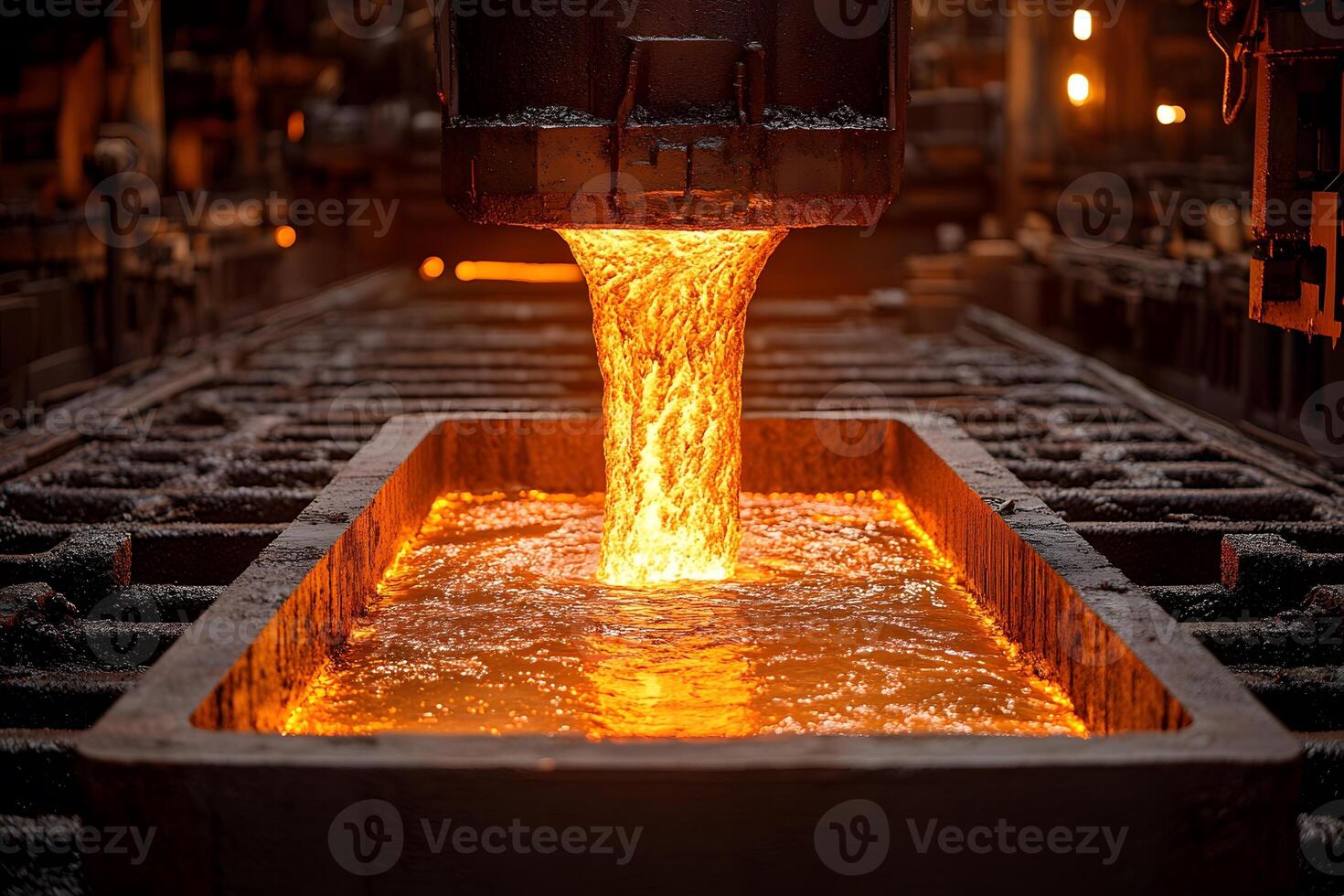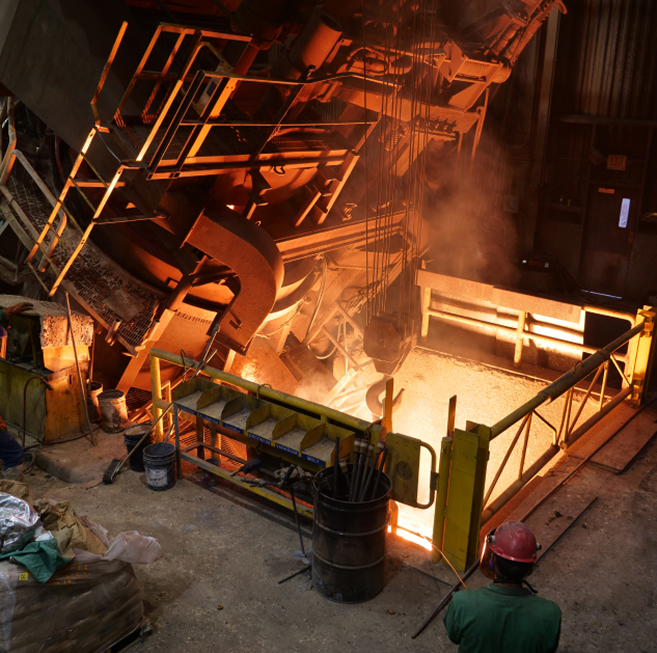Beginner-Friendly Guide to Aluminum Foundry Workflows
Wiki Article
Recognizing Metal Casting Processes: Technologies and Trends in the Foundry Market
The foundry market is experiencing substantial transformations driven by technological developments. Developments such as 3D printing and man-made intelligence are reshaping metal casting procedures, boosting performance and precision. Sustainable practices are gaining grip, stressing the value of ecological duty. Additionally, the intro of innovative products and automation is enhancing total casting high quality. These developments recommend a pivotal change in the industry, questioning concerning future instructions and effects for suppliers.Developments in 3D Printing for Metal Casting
Current developments in 3D printing innovation have actually significantly transformed the landscape of steel casting. The assimilation of additive production techniques has actually enabled the fast production of complex patterns and mold and mildews that were formerly tough or impossible to accomplish with typical approaches. By making use of materials such as sand and steel powders, makers can produce intricate geometries that boost style flexibility and lower material waste. This development not just accelerates the prototyping process yet likewise permits the modification of elements tailored to certain applications.
Furthermore, 3D printing promotes shorter preparation, which is crucial in markets calling for quick turn-around for parts. The innovation additionally supports the production of lightweight frameworks, therefore enhancing power efficiency in final result. Therefore, the foundry industry is experiencing a change towards even more lasting practices, driven by the effectiveness and precision supplied by these modern 3D printing methods in steel casting processes.
The Duty of Artificial Intelligence in Precision Manufacturing
As industries increasingly adopt advanced manufacturing technologies, synthetic intelligence (AI) is playing a critical role in enhancing precision manufacturing procedures. AI formulas assess substantial datasets to recognize patterns and maximize production specifications, leading to enhanced precision and efficiency. In metal casting, AI aids in predictive maintenance, lowering downtime by projecting tools failings prior to they take place.AI-driven simulations make it possible for manufacturers to design the casting process, refining layouts and decreasing problems. Equipment knowing techniques enhance high quality control by identifying abnormalities in real-time, therefore making certain that just items satisfying strict specifications continue with the assembly line.

Sustainable Practices in the Foundry Market
Sustainability has actually become a crucial emphasis in the foundry sector, motivating producers to take on practices that lessen ecological effect while keeping efficiency - Metal Foundry. One famous approach consists of the recycling of materials, especially steels, which substantially lowers waste and energy consumption. Foundries are increasingly executing closed-loop systems, enabling the reuse of sand and various other casting materials, thus reducing the need for virgin sourcesOn top of that, energy-efficient technologies, such as electric heaters, are gaining traction, as they reduced greenhouse gas discharges compared to traditional methods. Additionally, several you can find out more shops are exploring making use of biodegradable binders and eco-friendly coverings to reduce toxic byproducts. Employee training on lasting techniques has likewise become important, fostering a culture of environmental responsibility within companies. Generally, these sustainable techniques not just contribute to ecological conservation but additionally improve the lasting feasibility of the foundry industry in a significantly eco-conscious market.
Developments in Products for Improved Casting Top Quality
visit this website With the constant advancement of the foundry market, technologies in materials have actually become necessary for enhancing casting high quality. Advanced alloys and composite products are progressively being made use of to improve mechanical residential or commercial properties and decrease flaws in spreadings. These materials typically supply superior strength-to-weight ratios and improved resistance to rust and wear, addressing the demands of modern-day applications.In addition, the consolidation of nanomaterials is getting grip, enabling finer microstructures that lead to enhanced surface area coatings and dimensional precision. Aluminum Foundry. 3D printing modern technologies also contribute in creating complicated geometries with marginal waste, making it possible for the use of specialized materials that were previously challenging to cast
The development of environmentally pleasant binders and ingredients adds to sustainable practices while maintaining top quality results. Collectively, these innovations not only enhance the performance of actors items yet additionally straighten with the sector's change in the direction of sustainability and performance.
Automation and Robotics in Metal Casting Procedures
Automation and robotics are changing metal official website casting procedures by streamlining operations and improving precision. In modern-day shops, robotic systems are utilized for jobs such as mold handling, putting, and finishing, considerably lowering human treatment. This not just decreases the danger of crashes however likewise assures constant quality in manufacturing.Automation modern technologies, such as computer mathematical control (CNC) machines, facilitate detailed styles and complex geometries that were formerly challenging to achieve. Real-time information analytics enable suppliers to keep track of procedures and enhance performance constantly.
The combination of automation leads to boosted productivity and effectiveness, permitting factories to meet growing market needs while lowering lead times. As the sector welcomes these improvements, the labor force is additionally developing, calling for new skills to operate and preserve sophisticated equipment. In general, the fostering of automation and robotics is a critical fad shaping the future of metal casting procedures.
Frequently Asked Inquiries
What Is the Background of Metal Casting Methods?
Metal casting techniques go back to old people, with proof of bronze casting in Mesopotamia around 3000 BCE. Over centuries, techniques progressed considerably, incorporating innovations in materials and technology, shaping modern-day industrial methods.How Does Metal Casting Impact the Environment?
Metal casting substantially influences the setting with energy usage, emissions, and waste generation. Improvements in lasting techniques and modern technologies intend to minimize these results, advertising more ecologically friendly techniques within the market.What Safety And Security Actions Are Crucial in Shops?

What Prevail Issues in Metal Casting Products?
Usual defects in metal casting products include porosity, shrinkage, misruns, cold shuts, and surface area blemishes. These concerns emerge from variables such as inappropriate temperature level control, poor mold and mildew layout, and contamination throughout the casting procedure.Exactly How Do Foundries Make Certain Quality Assurance in Casting Processes?
Shops apply strenuous top quality control procedures with routine assessments, standard testing, process tracking, and adherence to market standards. These practices aid recognize issues early, making sure the stability and dependability of the final casting products.Technologies such as 3D printing and fabricated knowledge are reshaping metal casting procedures, improving effectiveness and precision. Recent innovations in 3D printing modern technology have considerably changed the landscape of steel casting. Automation and robotics are transforming steel casting procedures by improving and streamlining procedures precision. Metal casting methods date back to ancient worlds, with proof of bronze casting in Mesopotamia around 3000 BCE. Typical defects in steel casting products consist of porosity, shrinking, misruns, cold shuts, and surface blemishes.
Report this wiki page